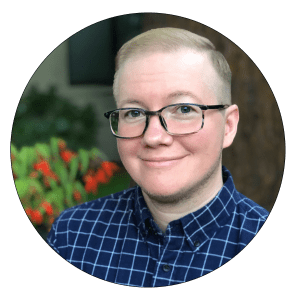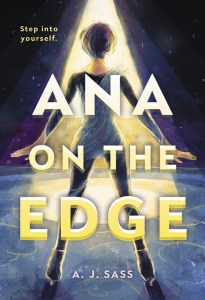All paths to self-discovery are valid, however winding
 I discovered myself as an adult in San Francisco, among the hills, rolling fog, and quirky architecture of century-old homes. Growing up, I had a sense that I was queer, but I didn’t possess the vocabulary to describe how I felt so I kept those feelings to myself. In San Francisco, a city that hangs rainbow flags from every streetlamp to celebrate Pride Month each June, I finally felt comfortable exploring my identity. My circle of queer friends also grew, and we supported each other through our coming out journeys.
I discovered myself as an adult in San Francisco, among the hills, rolling fog, and quirky architecture of century-old homes. Growing up, I had a sense that I was queer, but I didn’t possess the vocabulary to describe how I felt so I kept those feelings to myself. In San Francisco, a city that hangs rainbow flags from every streetlamp to celebrate Pride Month each June, I finally felt comfortable exploring my identity. My circle of queer friends also grew, and we supported each other through our coming out journeys.
It makes sense, then, that I’d set my debut novel, Ana on the Edge, in the city where I felt safe to explore my identity. My decision to make my main character, Ana, nonbinary requires a bit more unpacking.
I didn’t know I was nonbinary for most of the time I lived in San Francisco. I simply started using a male name and pronouns, then followed a fairly standard transition path for transgender men. When I first heard the term nonbinary, I was slow to embrace it—even though I instantly knew it applied to me. At the time, it was enough to be seen as a guy named Andrew, in a setting that felt safe and supportive.
Then my partner and I left San Francisco for a smaller town where almost no one knew I was trans. Most people assumed I was a cisgender man, and it suddenly felt like I’d returned to the closet I’d been hiding in all through my childhood. There were no rainbow flags to celebrate Pride Month in this town, no options to connect with the local queer community at all.
It was in this setting that I began writing Ana on the Edge. In many ways, Ana’s story developed from a deep need to be seen for who I really am. Maybe if I’d remained in San Francisco, I wouldn’t have felt as drawn to write a story featuring a nonbinary main character. But leaving the city where I first found myself made me realize how important it is for nonbinary readers who live in all types of places to see themselves within the pages of a novel.
So I wrote Ana on the Edge and I came out again. Since it was a multi-step process for me, I took a similar approach when developing Ana’s story. As a kid, I never got a chance to read books about nonbinary characters discovering their identities, so it was important for me to illustrate how a continued lack of representation might make the path to self-discovery especially winding. Like me, Ana doesn’t immediately realize she’s nonbinary and instead gathers clues from other people in her life who seem to know who they are better than she does.
Without spoiling too much, there’s a scene in Ana on the Edge when Ana first meets a new friend named Hayden and Hayden mistakes Ana for a boy. Ana knows she isn’t a boy, but in that moment she realizes she also doesn’t dislike being mistaken for one—at least not at first. It’s a welcome change from being seen as someone expected to unequivocally embrace portraying a dainty princess in her new skating program. It takes Ana longer to put all the pieces together and realize that rigid binaries of ‘boy’ and ‘girl’ don’t align with how she internally sees herself. It also took me a while to discover this about myself.
By writing Ana’s story from this angle, I hope not only to illustrate how the world often unconsciously caters to binaries in ways that cisgender people are privileged not to notice but also to let nonbinary and questioning kids know that it sometimes takes time to figure these things out. (This is also why I use she/her pronouns to talk about Ana; by the end of her story, Ana knows she’s nonbinary but also embraces the knowledge that she doesn’t have everything figured out about her identity, including whether a different set of pronouns might work better.) And regardless of whether you live in a small town like I did as a kid or a larger city like Ana, where rainbow flags hang from streetlamps during Pride Month, your path to discovering yourself is valid.
Even with this knowledge, you may still take a wrong turn, maybe get lost in some rolling fog. That’s fine. Keep questioning and discovering. Eventually, the sun will peek through. You’ll find that path, however winding, and continue on your journey.
What does nonbinary mean?
From the National Center for Transgender Equality:
“Most people – including most transgender people – are either male or female. But some people don’t neatly fit into the categories of ‘man’ or ‘woman,’ or ‘male’ or ‘female.’ For example, some people have a gender that blends elements of being a man or a woman, or a gender that is different than either male or female. Some people don’t identify with any gender. Some people’s gender changes over time.
People whose gender is not male or female use many different terms to describe themselves, with non-binary being one of the most common. Other terms include genderqueer, agender, bigender, and more. None of these terms mean exactly the same thing – but all speak to an experience of gender that is not simply male or female.”
From NYC’s LGBT Community Center:
“An umbrella term for people whose gender identity and/or gender expression differs from what is typically associated with the sex they were assigned at birth. People under the transgender umbrella may describe themselves using one or more of a wide variety of terms— including transgender. Many transgender people are prescribed hormones by their doctors to bring their bodies into alignment with their gender identity. Some undergo surgery as well. But not all transgender people can or will take those steps, and a transgender identity is not dependent upon physical appearance or medical procedures.”
Perfect for fans of Melissa and Ivy Aberdeen's Letter to the World, this heartfelt coming of age story introduces a nonbinary athlete navigating a binary world.
Twelve-year-old Ana-Marie Jin, the reigning US Juvenile figure skating champion, is not a frilly dress kind of kid. So, when Ana learns that next season's program will be princess themed, doubt forms fast. Still, Ana tries to focus on training and putting together a stellar routine worthy of national success.
Once Ana meets Hayden, a transgender boy new to the rink, thoughts about the princess program and gender identity begin to take center stage. And when Hayden mistakes Ana for a boy, Ana doesn't correct him and finds comfort in this boyish identity when he's around. As their friendship develops, Ana realizes that it's tricky juggling two different identities on one slippery sheet of ice. And with a major competition approaching, Ana must decide whether telling everyone the truth is worth risking years of hard work and sacrifice.
